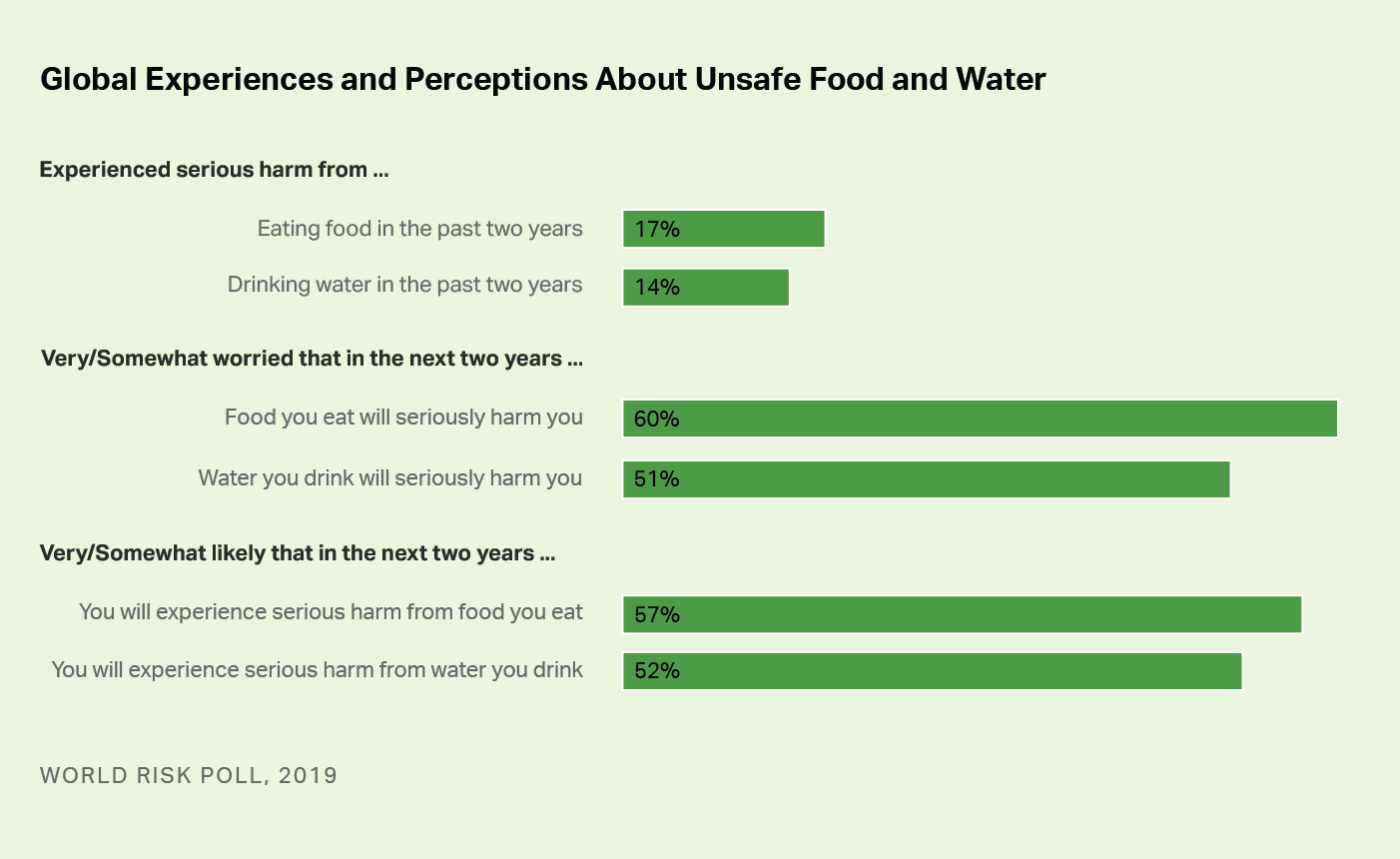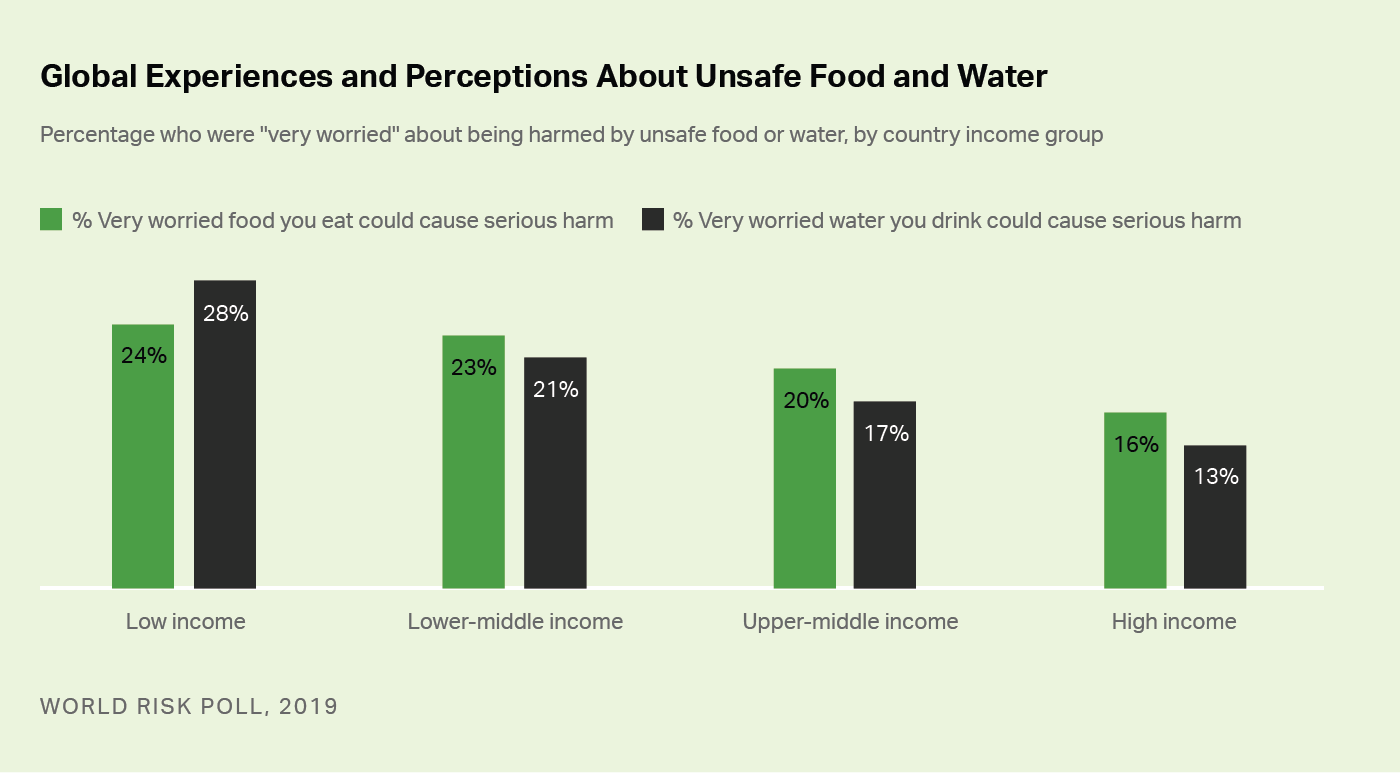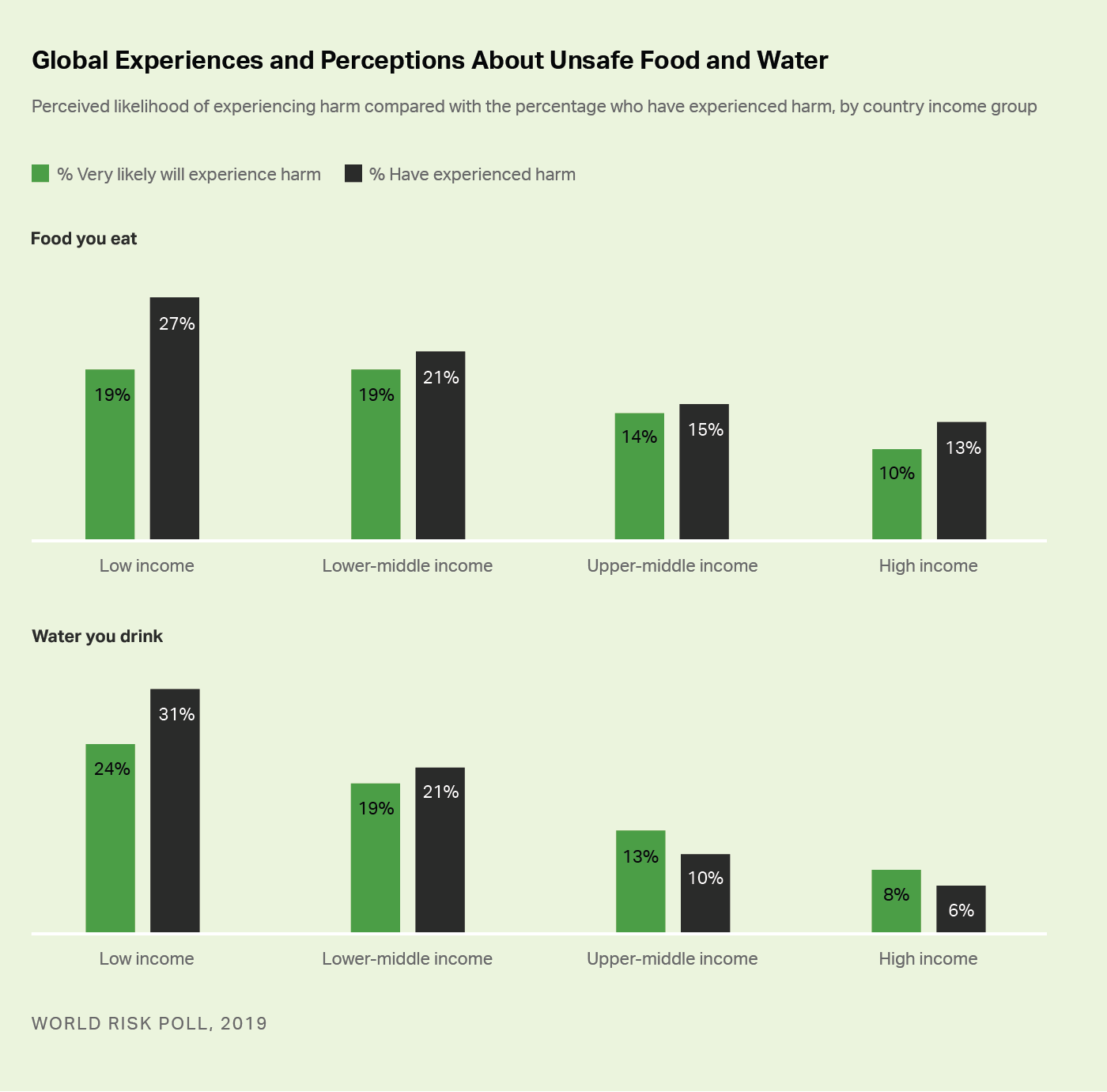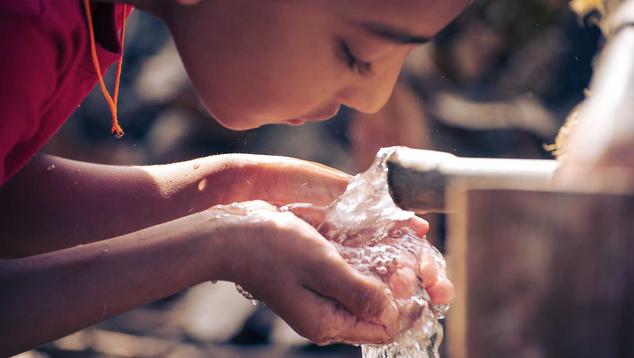This is the second in a series of blogs featuring key findings from the new Lloyd's Register Foundation World Risk Poll report.
Billions worldwide worry that they will be seriously harmed by consuming unsafe food and water, and nearly as many expect it to happen to them in the next two years, according to the new Lloyd's Register Foundation World Risk Poll.
More than half of adults surveyed in 142 countries and territories in 2019 said they were at least somewhat worried that the food they eat (60%) or the water they drink (51%) would seriously harm them in the next two years. More than half also expected they would be seriously harmed in that time frame by eating or drinking unsafe food (57%) or water (52%).
Over one in six adults (17%) -- or roughly 1 billion people -- said they or someone they know had experienced serious harm from eating food in the past two years. Nearly as many, 14%, said they had experienced harm from drinking water in that time frame.

Bar graph. This chart displays the percentages worldwide who are worried about experiencing serious harm from consuming unsafe water and food, the likelihood that either of these will happen in the next two years, and the percentage who say this has happened to them or to someone they know within the past two years.
The World Risk Poll, the first global study of worry and risk, provides insight into one of the biggest safety challenges facing society today and likely over the next several decades: the long-term safety of food and water. The World Health Organization estimates that 600 million people fall ill every year from eating unsafe food, and 420,000 die. Nearly half a million people die each year from contaminated water.
While contaminated food and water kill and injure people in all countries and territories around the world, low-income and lower-middle-income economies tend to be disproportionately affected, resulting in an estimated loss of approximately $95 billion per year in productivity because of unsafe food.
This context helps explain the heightened level of worry that people in low-income and lower-middle-income economies have about being seriously harmed by unsafe food or water. While large percentages across all countries were at least somewhat worried, the percentages of people who were very worried were much higher in low-income economies than in high-income economies.

Bar graph. This chart displays the percentages worldwide who are worried about experiencing serious harm from consuming unsafe water and food by country income group.
These same patterns were apparent in people's perceived likelihood that they would be seriously harmed in the next two years and in the percentages who reported that they or someone they know had experienced serious harm from unsafe water and food. The proportion of people in low-income and lower-middle-income economies who believed it was "very likely" they would be seriously harmed by the food they eat was slightly higher than in high-income economies. The difference was even sharper when considering the likelihood of being seriously harmed by drinking water.

Bar graph. This chart displays the likelihood that people will be harmed by eating or drinking contaminated food or water and the percentage who say they have been harmed by either, by country income group.
Still, Unsafe Food and Water Not Top Threat
Few people considered contaminated food and water to be one of the biggest threats to their safety, despite the high number of people it harms. Globally, only 4% of adults -- equivalent to 300 million people -- identified unsafe food or water as one of the two biggest threats to their daily safety.
These figures were consistent across all demographic categories at the global level; however, they were much higher in some countries than in others. Concern about food- or water-related risks is linked with various developmental and climate-related indicators, including access to basic drinking water and prevalence of drought, floods and extreme temperatures.
These threats were most commonly cited in sub-Saharan African countries, where these conditions are particularly unfavorable. However, the list also includes two high-income European countries -- Luxembourg (10%) and France (7%) -- demonstrating that concerns about food and water safety are not just tied to developmental or environmental factors.
Implications
With the global population forecast to reach nearly 10 billion by 2050, there will be even more pressure on the world's food systems, making food safety an even greater challenge than it is today.
Given the human and economic cost of food and water safety issues, the World Risk Poll findings highlight the need for more evidence-informed education and training about food and water safety. Even in countries where a significant number of people had experienced serious harm from contaminated food and water, many did not identify it as a major risk.
Read more about the World Risk Poll and download the report.




